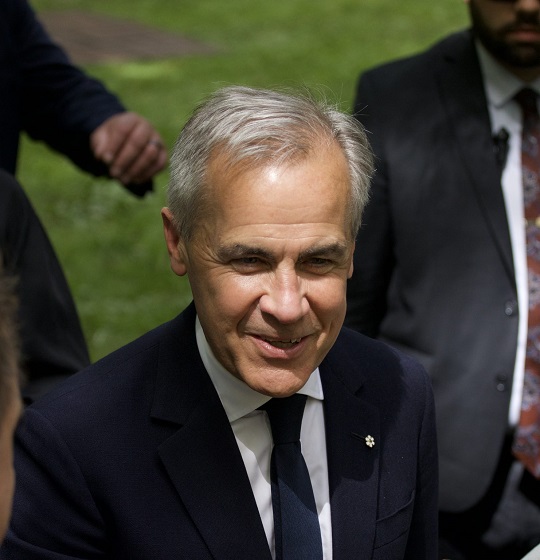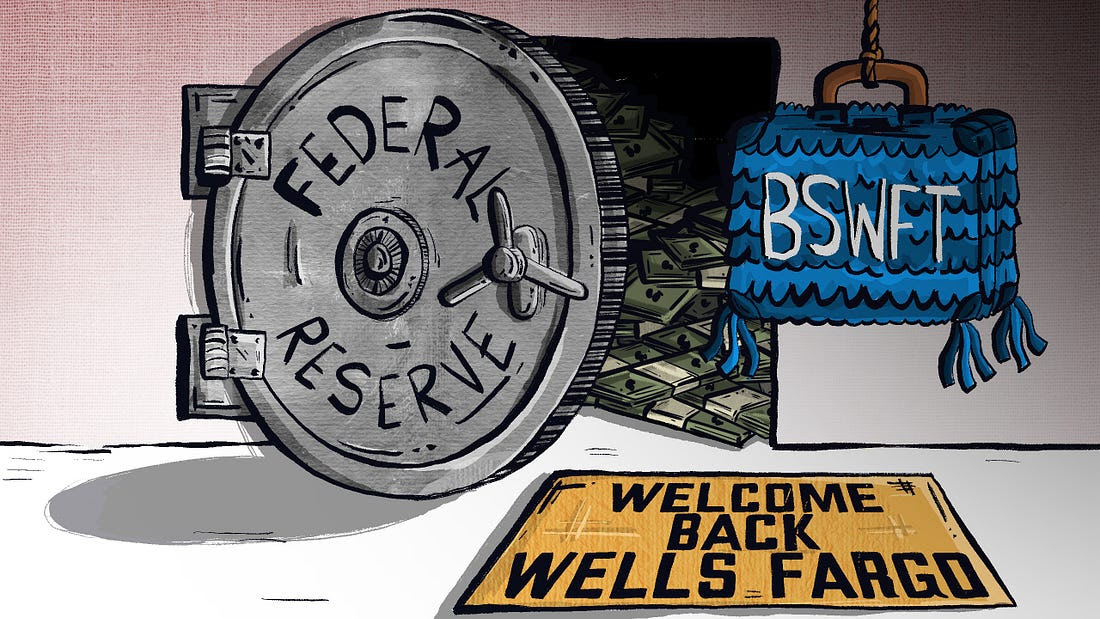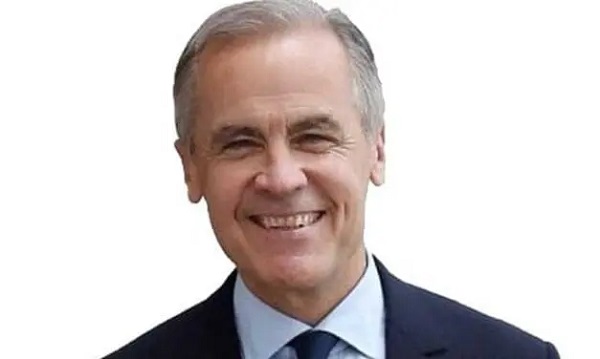Economy
Newly discovered business case for Canadian energy could unleash economic boom

From Resource Works
Canada has a hefty slate in recent years of big natural-resource projects that were abandoned, or put on a back burner, often because of government action or inaction.
One estimate is that Canada has seen $670 billion in cancelled resource projects since 2015, when Justin Trudeau became prime minister.
True, the Trudeau government in 2018 backed and took over the Trans Mountain oil pipeline expansion project, known as TMX. That’s been a success since May 2024, moving oil to U.S. and Asian buyers. It’s looking now to move more oil to Asia. And Ottawa is talking of First Nations getting some equity interest in it.
Many other major projects have been shelved or scrapped, though, some due to corporate economic decisions, but many due to governments.
One prime example was the Énergie Saguenay LNG project in Quebec. That $20-billion plan was fatally throttled in 2022 — on green grounds — by Quebec’s government and Trudeau’s minister of environment and climate change, Steven Guilbeault.
Now, with Trudeau leaving and a potential change federal government possible, there’s some early talk of reviving some projects. For example, Nova Scotia Premier Tim Houston has urged Ottawa to “immediately” revive the Energy East oil pipeline project.
And U.S. President Donald Trump’s threats of tariffs on imports from Canada have underlined calls for new energy exports to new overseas customers.
We list below 31 projects that have been abandoned or shelved, or have not been heard from for years. They are listed in order of the year of cancellation, or the year they were last heard from.
Keltic LNG
This project was actually an LNG import facility that would then manufacture plastic pellets. It won its first government approval (from Nova Scotia) in 2007. But it never went ahead, and all approvals long ago expired.
Corridor Resources shale gas
Proposed in 2011, the idea was to produce from the huge shale-gas reserves in New Brunswick. But Corridor Resources (now called Headwater Exploration Inc) was unable to find a partner. And in 2014 the N.B. government put a moratorium on hydraulic fracturing (“fracking”) for gas; it is still in effect.
Dunkirk oil sands
Proposed by the billionaire Koch brothers of the U.S. in 2014, but ditched later that year, this Alberta project was supposed to produce up to 60,000 barrels a day, using the in-situ steam-assisted gravity drainage (SAGD) process.
Kitsault LNG
Kitsault Energy proposed in 2013 an LNG-for-export project at the northern mining ghost town of Kitsault BC. It hoped to line up a pipeline partner, create an ‘energy corridor’, and to begin production in 2018. It said it was still working on cost estimates in 2014, and nothing was heard thereafter.
Carmon Creek oil sands
Shell proposed this in 2013, to produce 80,000 barrels a day. The company in 2014 said it would slow down the project while attempting to lower costs and improve its design. But in 2015, Shell gave up on it, giving a lack of pipelines to coastal waters as one reason.
Stewart LNG
The Canada Stewart Energy Group proposed in 2014 an LNG terminal near Stewart in northern BC. It aimed to produce 30 million tonnes a year, starting in 2017. It has not been heard from since 2014.
Watson Island LNG
This LNG terminal was proposed in 2014 by Watson Island LNG Corporation, to be located at Prince Rupert, with capacity to produce one million tonnes of LNG a year. There have been no updates since 2014, and the project’s website is no longer online.
Discovery LNG
Rockyview Resources was the developer of this LNG project at Campbell River on Vancouver Island, first proposed in 2014. It was a big plan, for 20 million tonnes of LNG a year, and would need a 300-km pipeline from the mainland. As of January 2018, Rockyview was reported still seeking partners, but there have been no updates since 2015.
Orca LNG
A Texas-based company got from Canada’s National Energy Board in 2015 a license to export 24 million tonnes of LNG a year, from a proposed plant at or near Prince Rupert. There has been no news from the developer since then.
New Times Energy LNG
New Times Energy proposed in 2015 to locate at Prince Rupert an LNG terminal capable of producing 12 million tonnes of LNG a year. Ottawa approved its export licence in 2016, but there has been no news of the project, or of any pipeline to feed it, since then.
Northern Gateway
Journalist Tom Fletcher recently looked in Northern Beat at the idea of reviving the $7.9-billion Northern Gateway pipeline, first proposed in 2008 and shelved in 2016.
“One new project that could be reactivated is the Northern Gateway oil pipeline, snuffed out by Prime Minister Justin Trudeau’s environmental posturing.
“Already burdened by court challenges, Enbridge’s Northern Gateway was killed by Trudeau’s 2016 declaration that oil tankers shouldn’t be allowed near the ‘Great Bear Rainforest.’
“He is among many urban people who are unaware this faux-Indigenous name was dreamed up by professional environmentalists at a fancy restaurant in San Francisco, explicitly to create a barrier for Canadian oil exports to Asia. . . ..
“Those Asia exports have finally begun to flow in significant volumes through the recent Trans Mountain pipeline expansion, which has been mostly at capacity since it opened.”
Fletcher notes that in 2021 then-Conservative leader Erin O’Toole campaigned on a promise to revive the Northern Gateway pipeline.
“Whether a new federal government can or wants to revive Northern Gateway is unknown. But combined with Coastal Gaslink, it would build on a northern resource corridor that could also include the already-permitted Prince Rupert Gas Transmission line now proposed by TC Energy and the Nisga’a government.
“The Prince Rupert line would supply a floating LNG plant (the Nisga’a Nation’s Ksi Lisims LNG project) and new power lines along the energy corridor could help serve the needs of the broad expanse of northern B.C. that remains off the grid.”
Muskwa oil sands
Another project of the Koch brothers in Alberta’s oil sands, proposed in 2012, this project was to produce 10,000 barrels per day. It was scrapped in 2016, with the developer citing “regulatory uncertainty.”
Douglas Channel LNG
This modest (0.55 million tonnes a year) floating LNG project was led by Alta Gas. The plan was for a $400-million floating terminal in Douglas Channel near Kitimat. It was shelved in 2016, with Alta Gas citing a global surplus in LNG, and low prices.
Triton LNG
At the same time as scrapping Douglas Channel LNG (above), Alta Gas and partner Idemitsu Kosan of Japan put a freeze on the Triton LNG project in the same area. It was proposed in 2013, and was to have produced up to 2.3 million tonnes of LNG per year.
Energy East
Another classic and costly example of shelving was the $15.7-billion Energy East pipeline. This was proposed in 2013, the aim being to switch 3,000 km of the TransCanada gas pipeline to carry oil, and add another 1,500 km of oil pipeline and facilities. All this so it could move oil from Alberta and Saskatchewan to Quebec and New Brunswick refineries, for domestic use and for exports.
The project was strenuously attacked by environmental groups (and a number of First Nations) and a poll showed nearly 60% of Quebecers opposed it. Quebec politicians called for more stringent environmental rules to apply to it, and the Quebec government decided on a court challenge, to ensure the Quebec portion of the project met that province’s environmental laws and regulations.
Trans Canada (now TC Energy) then shelved the project in October 2017, citing “existing and likely future delays resulting from the regulatory process, the associated cost implications and the increasingly challenging issues and obstacles.” The project had already cost Trans Canada $1 billion.
(The same day, Trans Canada also scrapped its Eastern Mainline project, to add new gas pipeline and compression facilities to the existing system in Southern Ontario.)
New Brunswick Premier Blaine Higgs soon sought to revive Energy East, and discussed it with Trudeau. He quoted Trudeau as saying he’d be willing to discuss the issue again if Higgs was able to get Quebec onside. But Trans Canada repeated its announced decision.
Now, with Trump threatening tariffs, Nova Scotia Premier Tim Houston is calling on Ottawa to approve the Energy East oil pipeline. He said Trump’s tariffs mean here is “urgency” to strengthen the country through projects such as Energy East.
Earlier, commentator Brian Zinchuk of Pipeline Online urged: “If (Conservative leader Pierre) Poilievre wins a massive majority, can we PLEASE build the Energy East Pipeline?”
Zinchuk added: “So what could a newly empowered government with a massive majority do? Here’s a novel idea: Call up TC Energy and ask them to dust off their 2014 application to build the Energy East Pipeline. We’re going to need it.”
Mackenzie Valley Pipeline
This project was first proposed in the early 1970s to move natural gas from the Beaufort Sea to northern Alberta, and then to tie in to existing gas pipelines there.
Ottawa launched in 1974 a federal inquiry into the project. After three years (and at a cost of $5.3-million) inquiry commissioner Thomas Berger said in 1977 that the 1,220-km pipeline should be postponed for 10 years, estimating that it would take that long for land claims to be settled and for Indigenous Peoples to be ready for the impact of such a project.
Eventually, after another six years of review, the Mackenzie Valley pipeline was granted federal approval in 2011, subject to 264 conditions.
But by 2017 the initially estimated costs of $8 billion had risen to $16.2 billion, and the joint-venture partnership of Imperial Oil, ConocoPhillips Canada, ExxonMobil Canada and the Aboriginal Pipeline Group announced abandonment of the project, citing natural gas prices – but also the long regulatory process.
Said an Imperial Oil official: “Our initial estimate for the timing for the regulatory process was somewhere between 22 and 24 months. We filed for regulatory approval in October 2004 and we received final regulatory approval in 2011. I’ll leave it up to you to decide if that is a reasonable amount of time for a significant capital investment project.”
Prince Rupert LNG
Shell Canada took over in 2016 the BG Group’s back-burnered 2012 proposal for an $11-billion LNG terminal on Ridley Island, Prince Rupert. It was to produce 21 million tonnes of LNG per year. But in 2017, Shell shelved the project.
That also killed the $9.6-billion Westcoast Connector pipeline proposed by Enbridge in 2012. This was to build an 850-km natural gas pipeline corridor from northeast B.C. to Ridley Island to feed gas to Prince Rupert LNG.
There followed recently some thought that this Westcoast Connector pipeline could be revived, to feed the Nisga’a Nation’s proposed Ksi Lisims LNG project, but Ksi Lisims chose to take over the Prince Rupert Gas Transmission pipeline (PRGT).
Pacific Northwest LNG
Pacific NorthWest LNG proposed in 2013 a $36-billion LNG-for-export plant on Lelu Island south of Prince Rupert BC.
It was to produce up to 20.5 million tonnes of LNG a year, and would include a marine terminal for loading LNG on to vessels for export to markets in Asia.
As ever, the proposal ran into opposition from environmental and some (but not all) Indigenous groups. And in 2017, Malaysia’s Petronas and its minority partners (China’s Sinopec, Japan’s JAPEX, Indian Oil Corporation and PetroleumBrunei) decided not to proceed.
They cited “changes in market conditions.” But CEO Mike Rose of Tourmaline Oil, Canada’s largest natural-gas producer, pointed a finger at governments, saying “government dithering” played a role in the cancellation.
“They [Petronas] kept getting held up. . . . All levels of government were trying to squeeze more money out of them.”
Rose said a “more effective, streamlined approval process,” would have seen Petronas make a final investment decision on the project three years earlier, when LNG prices were much higher.
(Petronas continues to be a 25% partner in the LNG Canada project, which goes online later this year.)
The Pacific NorthWest LNG plant would have been fed by TC Energy’s 900-km Prince Rupert Gas Transmission pipeline (PRGT). The permits for that line now are owned by the Nisg̱a’a First Nation and partner Western LNG. They propose a route change so the line can feed the Nation’s planned Ksi Lisims LNG plant. The B.C. Environmental Assessment Office now is considering whether the pipeline’s permits are still valid.
Aurora LNG
Nexen Energy, with Chinese and Japanese partners, proposed in 2014 the $28-billion Aurora LNG terminal on Digby Island, Prince Rupert. It would have produced up to 24 million tonnes of LNG a year. The partners ditched the plan in 2017, citing the economics.
WCC LNG
Exxon Mobil and Calgary-based Imperial Oil proposed in 2015 this $25-billion LNG export facility on Tuck Inlet, Prince Rupert. It was to produce some 30 million tonnes per year. The partners scrapped the project in 2018, without explanation.
Grassy Point LNG
Australia’s Woodside Energy proposed in 2014 a $10-billion facility 30 km north of Prince Rupert, to produce up to 20 million tonnes of LNG per year. Woodside shelved the plan in 2018. It said it would focus instead on the Kitimat LNG project with Chevron Canada (but that also died on the drawing board. (See ‘Kitimat LNG’ farther below)
Aspen oil sands
An Imperial Oil project, proposed in 2013, was to produce up to 150,000 barrels of bitumen a day. The $7-billion project was put on hold in 2019.
Kwispaa LNG
Proposed in 2014, this was an $18-billion project for an LNG plant near Bamfield on Vancouver Island, with an associated natural-gas pipeline. It was to be developed by Steelhead LNG Corporation through a co-management partnership with the Huu-ay-aht First Nations. The plan was to produce 12 million tonnes a year, and later up to 24 million. Steelhead stopped work on it in 2019, and in 2022 Ottawa formally terminated the environmental-assessment window for the project.
Frontier Oil Sands
Teck proposed this $20.6-billion mining project in Alberta’s oil sands in 2012, but gave up the idea in 2020. It would have had production capacity of about 260,000 barrels a day.
Kitimat LNG
Kitimat LNG was a $30-billion LNG-for-export plant at Kitimat BC, proposed in 2018 by Chevron Canada and Australia’s Woodside Energy. It was designed to produce up to 10 million tonnes of LNG a year.
Chevron sought to sell its share of the project but failed to find a buyer, and in the end Chevron and Woodside shelved the project in 2021.
Kitimat LNG would have been fed gas bv the proposed Pacific Trails Pipeline, a project by Chevron and Apache Corporation. Woodside Australia had bought Apache’s stake in the project for $2.75 billion in 2014. The pipeline plan has also been put away.
Goldboro LNG
Alberta energy company Pieridae proposed in 2011 an LNG plant on Nova Scotia’s east shore. The plan was to ship 10 million tonnes per year to Europe. But the project failed to win $925 million in federal funding, and Pieridae bailed out in 2021
Keystone XL
The $8-billion Keystone XL pipeline was proposed in 2008 by TC Energy, to deliver Alberta oil to Nebraska, and then, through existing pipelines, to refineries on the U.S. Gulf Coast.
The project got its key U.S. presidential permit from then-president Donald Trump in 2017. Work eventually began in 2020, with the Alberta government kicking in $1.5 billion, and a promise of a $6-billion loan guarantee, in hopes of completion in 2023.
But under pressure from environmental groups, U.S. president Joe Biden revoked the permit on his first day in office on January 20, 2021, citing the “climate crisis.”
So this was, then, a rare Canadian project cancellation engineered by the U.S., not by Canada.
Énergie Saguenay
In 2015 came GNL Québec’s $20-billion proposal to build an LNG plant at the port of Saguenay in Quebec.
The Énergie Saguenay project, backed by Ruby Capital of the U.S., would connect to TC Energy’s Canadian Mainline, the big natural gas pipeline that carries gas from Western Canada to markets in Canada and the United States. The connection would be via a 780-km pipeline from northeastern Ontario to Saguenay, proposed by Gazoduq Inc.
Énergie Saguenay said its plant would produce 10.5 million tonnes of LNG a year. (The LNG Canada plant in B.C. will produce up to 14 million tonnes a year.) Énergie Saguenay said it would export its LNG via the St. Lawrence and Saguenay Rivers. It spoke of 140-165 shipments per year
The project raised considerable interest, as Germany, Latvia and Ukraine were expressing interest in importing Canadian LNG. Germany’s Chancellor Olaf Scholz came to Canada in the summer of 2022 and asked Trudeau about LNG exports.
Trudeau, though, said he saw no business case for LNG exports to Europe, and said Canada could always send natural gas to the U.S., where Americans could turn it into American LNG and send that to Europe. (This was already happening, and continues.)
In the end, the Quebec government, which initially supported Énergie Saguenay, changed its mind and pulled the plug on environmental grounds.
Then Steven Guilbeault, federal minister of environment and climate change, hammered home the final coffin nail in 2022, saying: “The Énergie Saguenay Project underwent a rigorous review that clearly demonstrates that the negative effects the project would have on the environment are in no way justifiable.”
That regulatory rejection has led to a $20.12-billion international damage claim against the federal government by Ruby Capital.
Bear Head LNG
Bear Head Energy planned in 2014 to build an LNG-for-export plant on the Strait of Canso, Nova Scotia. It was to send 12 million tonnes a year to Europe. But in 2023 Bear Head, under new ownership, announced plans instead to produce hydrogen for export.
Port Edward LNG
Planning started in 2019 for this $450-million small-scale LNG project, for a site east of Port Edward BC. It was to ship LNG overseas in containers, but the project was scrapped in 2024.
Enbridge Line 5
Under appeal is a U.S. court order to shut down, by 2026, this pipeline that carries Canadian oil to Ontario, by way of Wisconsin and Michigan. In the court case, the Wisconsin-based Bad River Band, through whose territory the pipeline runs, seeks to have it shut down.
A U.S. district court ordered Enbridge in 2023 to shut down parts of the pipeline within three years and pay the band $5.2 million for trespassing on its land. Enbridge is appealing (and so is the Bad River Band, which wants an immediate shutdown.)
What’s next?
While there has been a little chatter about reviving some of the scratched projects, there have been no formal proposals for resurrections, and Canada’s current attention is on Donald Trump and his promised tariffs in imports from Canada
On the political front in Canada, national Conservative leader Pierre Poilievre said in a recent speech in Vancouver: “By blocking pipelines and LNG plants in Canada, the Liberals have forced Canadians to sell almost all of our energy to the United States, giving President Trump massive leverage in making these tariff threats.”.
He said that that if he was prime minister, he would have approved pipelines such as Northern Gateway and Energy East, as well as giving fast-track approvals for LNG plants, thus giving Canada more export options.
And Poilievre promised to allow pipeline companies on First Nations lands to pay some of their federal tax to affected nations.
“Then these communities will have a very powerful incentive to say yes, and they can use some of that money to defeat poverty, build schools and hospitals and clean water and other essentials for their people.”
But now Canada has first to cope with Trump’s Fortress America economic-warfare plans.
Automotive
Federal government should swiftly axe foolish EV mandate

From the Fraser Institute
Two recent events exemplify the fundamental irrationality that is Canada’s electric vehicle (EV) policy.
First, the Carney government re-committed to Justin Trudeau’s EV transition mandate that by 2035 all (that’s 100 per cent) of new car sales in Canada consist of “zero emission vehicles” including battery EVs, plug-in hybrid EVs and fuel-cell powered vehicles (which are virtually non-existent in today’s market). This policy has been a foolish idea since inception. The mass of car-buyers in Canada showed little desire to buy them in 2022, when the government announced the plan, and they still don’t want them.
Second, President Trump’s “Big Beautiful” budget bill has slashed taxpayer subsidies for buying new and used EVs, ended federal support for EV charging stations, and limited the ability of states to use fuel standards to force EVs onto the sales lot. Of course, Canada should not craft policy to simply match U.S. policy, but in light of policy changes south of the border Canadian policymakers would be wise to give their own EV policies a rethink.
And in this case, a rethink—that is, scrapping Ottawa’s mandate—would only benefit most Canadians. Indeed, most Canadians disapprove of the mandate; most do not want to buy EVs; most can’t afford to buy EVs (which are more expensive than traditional internal combustion vehicles and more expensive to insure and repair); and if they do manage to swing the cost of an EV, most will likely find it difficult to find public charging stations.
Also, consider this. Globally, the mining sector likely lacks the ability to keep up with the supply of metals needed to produce EVs and satisfy government mandates like we have in Canada, potentially further driving up production costs and ultimately sticker prices.
Finally, if you’re worried about losing the climate and environmental benefits of an EV transition, you should, well, not worry that much. The benefits of vehicle electrification for climate/environmental risk reduction have been oversold. In some circumstances EVs can help reduce GHG emissions—in others, they can make them worse. It depends on the fuel used to generate electricity used to charge them. And EVs have environmental negatives of their own—their fancy tires cause a lot of fine particulate pollution, one of the more harmful types of air pollution that can affect our health. And when they burst into flames (which they do with disturbing regularity) they spew toxic metals and plastics into the air with abandon.
So, to sum up in point form. Prime Minister Carney’s government has re-upped its commitment to the Trudeau-era 2035 EV mandate even while Canadians have shown for years that most don’t want to buy them. EVs don’t provide meaningful environmental benefits. They represent the worst of public policy (picking winning or losing technologies in mass markets). They are unjust (tax-robbing people who can’t afford them to subsidize those who can). And taxpayer-funded “investments” in EVs and EV-battery technology will likely be wasted in light of the diminishing U.S. market for Canadian EV tech.
If ever there was a policy so justifiably axed on its failed merits, it’s Ottawa’s EV mandate. Hopefully, the pragmatists we’ve heard much about since Carney’s election victory will acknowledge EV reality.
Economy
The stars are aligning for a new pipeline to the West Coast

From Resource Works
Mark Carney says another pipeline is “highly likely”, and that welcome news.
While attending this year’s Calgary Stampede, Prime Minister Mark Carney made it official that a new pipeline to Canada’s West Coast is “highly likely.”
While far from a guarantee, it is still great news for Canada and our energy industry. After years of projects being put on hold or cancelled, things are coming together at the perfect time for truly nation-building enterprises.
Carney’s comments at Stampede have been preceded by a number of other promising signs.
At a June meeting between Carney and the premiers in Saskatoon, Alberta Premier Danielle Smith proposed a “grand bargain” that would include a privately funded pipeline capable of moving a million barrels of oil a day, along with significant green investments.
Carney agreed with Smith’s plan, saying that Canada needed to balance economic growth with environmental responsibility.
Business and political leaders have been mostly united in calling for the federal government to speed up the building of pipelines, for economic and strategic reasons. As we know, it is very difficult to find consensus in Canada, with British Columbia Premier David Eby still reluctant to commit to another pipeline on the coast of the province.
Alberta has been actively encouraging support from the private sector to fund a new pipeline that would fulfil the goals of the Northern Gateway project, a pipeline proposed in 2008 but snuffed out by a hail of regulations under former Prime Minister Justin Trudeau.
We are in a new era, however, and we at Resource Works remarked that last month’s G7 meeting in Kananaskis could prove to be a pivotal moment in the history of Canadian energy. An Ipsos poll found that Canada was the most favoured nation for supplying oil in the G7, and our potential as an energy superpower has never been more important for the democratic world, given the instability caused by Russia and other autocratic energy powers.
Because of this shifting, uncertain global climate, Canadian oil and gas are more attractive than ever, and diversifying our exports beyond the United States has become a necessity in the wake of Donald Trump’s regime of tariffs on Canada and other friendly countries.
It has jolted Canadian political leaders into action, and the premiers are all on board with strengthening our economic independence and trade diversification, even if not all agree on what that should look like.
Two premiers who have found common ground are Danielle Smith and Ontario Premier Doug Ford. After meeting at Stampede, the pair signed two memorandums of understanding to collaborate on studying an energy corridor and other infrastructure to boost interprovincial trade. This included the possibility of an eastward-bound pipeline to Ontario ports for shipping abroad.
Ford explicitly said that “the days of relying on the United States 100 percent, those days are over.” That’s in line with Alberta’s push for new pipeline routes, especially to northwestern B.C., which are supported by Smith’s government.
On June 10, Resource Works founder and CEO Stewart Muir wrote that Canadian energy projects are a daunting endeavour, akin to a complicated jigsaw puzzle, but that getting discouraged by the complexity causes us to lose sight of the picture itself. He asserted that Canadians have to accept that messiness, not avoid it.
Prime Minister Carney has suggested he will make adjustments to existing regulations and controversial legislation like Bill C-69 and the emissions cap, all of which have slowed the development of new energy infrastructure.
This moment of alignment between Ottawa, the provinces, and other stakeholders cannot be wasted. The stars are aligning, and it will be a tragedy if we cannot take a great step into the future of our country.
-

 International2 days ago
International2 days agoChicago suburb purchases childhood home of Pope Leo XIV
-

 Daily Caller2 days ago
Daily Caller2 days agoBlackouts Coming If America Continues With Biden-Era Green Frenzy, Trump Admin Warns
-

 Daily Caller2 days ago
Daily Caller2 days ago‘I Know How These People Operate’: Fmr CIA Officer Calls BS On FBI’s New Epstein Intel
-

 Frontier Centre for Public Policy1 day ago
Frontier Centre for Public Policy1 day agoNew Book Warns The Decline In Marriage Comes At A High Cost
-

 Economy1 day ago
Economy1 day agoThe stars are aligning for a new pipeline to the West Coast
-

 National1 day ago
National1 day agoLiberal ‘Project Fear’ A Longer Con
-

 Censorship Industrial Complex24 hours ago
Censorship Industrial Complex24 hours agoCanadian pro-freedom group sounds alarm over Liberal plans to revive internet censorship bill
-

 Crime23 hours ago
Crime23 hours agoTrump supporters cry foul after DOJ memo buries the Epstein sex trafficking scandal







